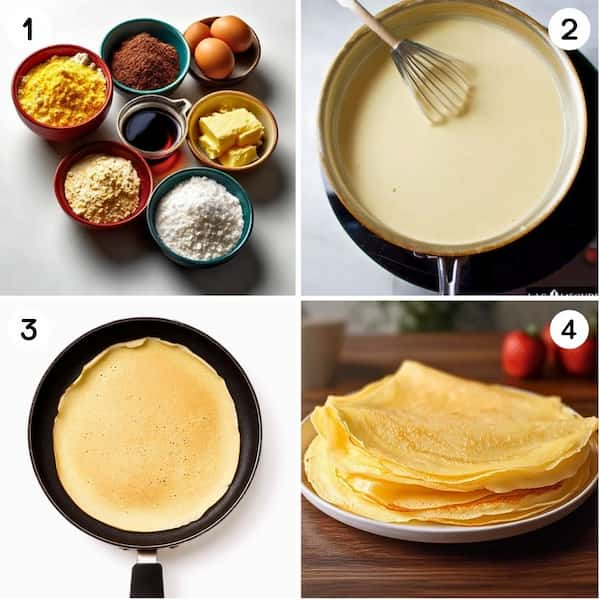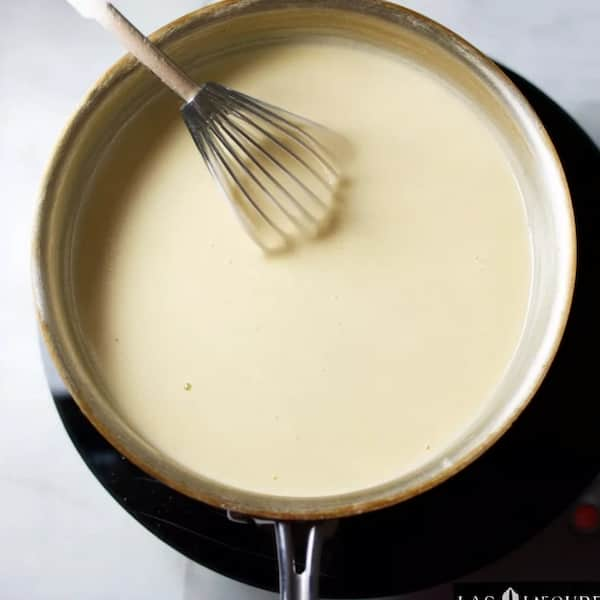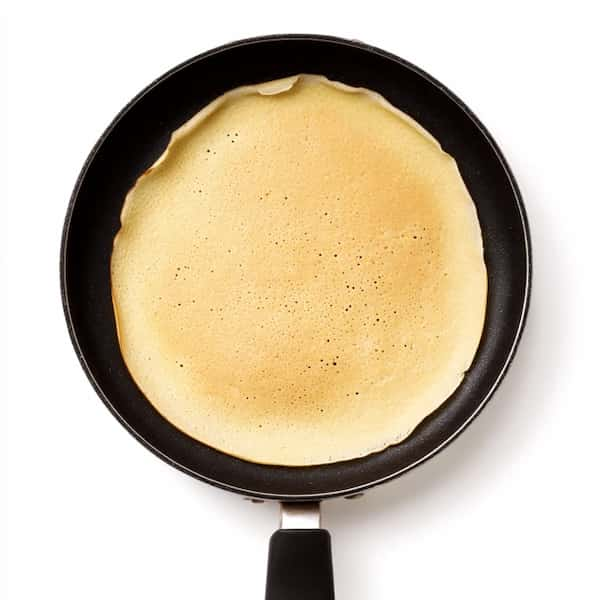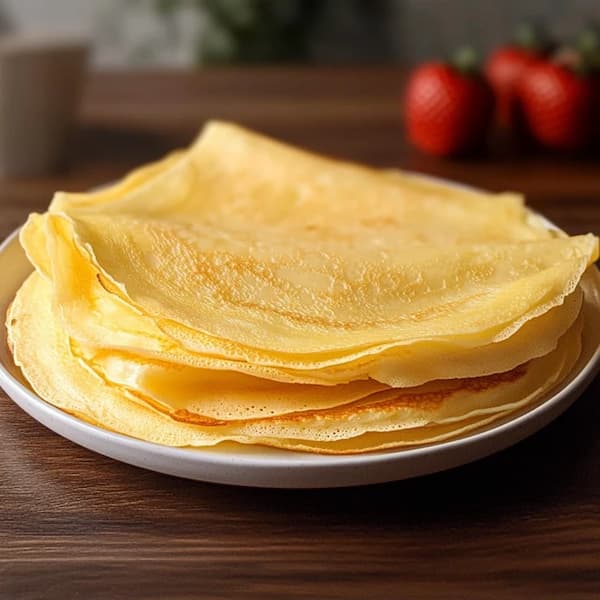There’s something undeniably special about making crepes from scratch. Maybe it’s the way they transform simple ingredients into a dish that feels elegant without even trying.
Or maybe it’s how easily they adapt to whatever you’re craving — sweet or savory, breakfast or dinner, casual brunch or cozy dessert.
My relationship with crepes started on a rainy Sunday when I was out of pancake mix and decided to try something new. The result? A stack of delicate, lacy crepes that turned out to be even more versatile (and honestly more fun) than pancakes ever were.
Since then, crepes have become a staple in my kitchen — my “I have eggs and milk, now what?” solution.

Ingredients You’ll Need for the Best Homemade Crepes
Here’s what goes into making a classic batch of crepes. No fancy ingredients, just pantry staples that come together in a beautifully thin batter.
- 1 cup all-purpose flour
- 2 large eggs
- 1 1/2 cups milk
- 2 tablespoons melted butter
- 1 tablespoon sugar (omit if making savory crepes)
- 1/4 teaspoon salt
- 1/2 teaspoon vanilla extract (optional for sweet crepes)
- Extra butter or oil for the pan

How to Make the Batter Smooth and Crepe-Ready
Start by whisking the eggs in a large bowl. Once they’re smooth, pour in the milk and melted butter. Whisk until everything’s well combined, then slowly add the flour, sugar, salt, and vanilla (if using).
Whisk vigorously to get rid of lumps. If you really want that silky-smooth texture, you can blend the batter for 10–15 seconds using a blender.

Now comes the most important part — let the batter rest. You don’t want to rush this. Letting it sit for at least 30 minutes (or up to an hour) gives the flour time to absorb the liquid.
That means softer, more pliable crepes that don’t tear. While the batter rests, heat your pan and gather your toppings or fillings.
Time to Cook: The First Crepe is Just Practice
Use a nonstick skillet or a dedicated crepe pan if you have one. Heat it over medium and lightly brush with butter or oil. The pan should be hot enough that a drop of water dances across the surface, but not so hot that it smokes.
Pour about 1/4 cup of batter into the center of the pan. Immediately swirl the pan in a circular motion to spread the batter into a thin, even layer. Don’t worry if the first one turns out a little wonky — it’s the test run.
After 1–2 minutes, once the edges lift slightly and the bottom looks golden, flip with a spatula and cook the other side for 30 seconds.

Transfer the finished crepe to a plate and cover it with a clean towel to keep warm while you make the rest. Repeat until you’ve used all the batter. This recipe makes about 10–12 crepes, depending on the size of your pan.

Filling Ideas That Never Fail
This is where things get fun. Once you’ve got your crepes, the possibilities open wide. If you’re in the mood for sweet, try a dusting of powdered sugar, a drizzle of maple syrup, or a slather of Nutella with sliced bananas.
For something classic, you can’t go wrong with lemon juice and sugar — it’s bright, simple, and completely addictive.

For savory options, fill with sautéed spinach and cheese, scrambled eggs and chives, or roasted mushrooms with a little cream. You can also make a stack, layer it with fillings, and bake it like a crepe cake for a more dramatic presentation.
How to Keep Them Warm and Reheat Later
If you’re serving crepes right away, keep them stacked and loosely covered with foil or a clean kitchen towel to trap the warmth. You can also pop them in a low oven (around 200°F) to hold them until you’re ready to serve.
Have leftovers? No problem. Store them in the fridge with parchment paper between each crepe to prevent sticking. They reheat well in a hot pan for about 30 seconds per side or in the microwave for 10–15 seconds.
Tips for Crepe-Making Confidence
The key to great crepes is trusting the process. That first one might not be pretty, and that’s totally okay. Once your pan is at the right heat and you get the hang of swirling, it becomes second nature. Always stir the batter between each pour — flour tends to settle.
If you want to get ahead, make the batter the night before and let it rest in the fridge. You’ll wake up halfway to breakfast. Just give it a quick whisk before using.
Another tip: don’t overload your fillings. Crepes are thin and delicate, and too much filling can make them soggy or hard to fold. Keep things light and layered for best results.
Final Thoughts: Crepes Are Simpler Than You Think
Once you try homemade crepes, you realize how incredibly simple they are — and how rewarding. They’re the kind of recipe that looks impressive but feels effortless once you get into the rhythm.
Best of all, they adapt to whatever moment you’re in. They can be cozy and comforting or fresh and light. You can roll them, fold them, stack them, or eat them plain standing over the stove (no judgment).
If you’re new to crepes, start here and see how easy they can be. And if you’re already a crepe lover, this version will never let you down.


